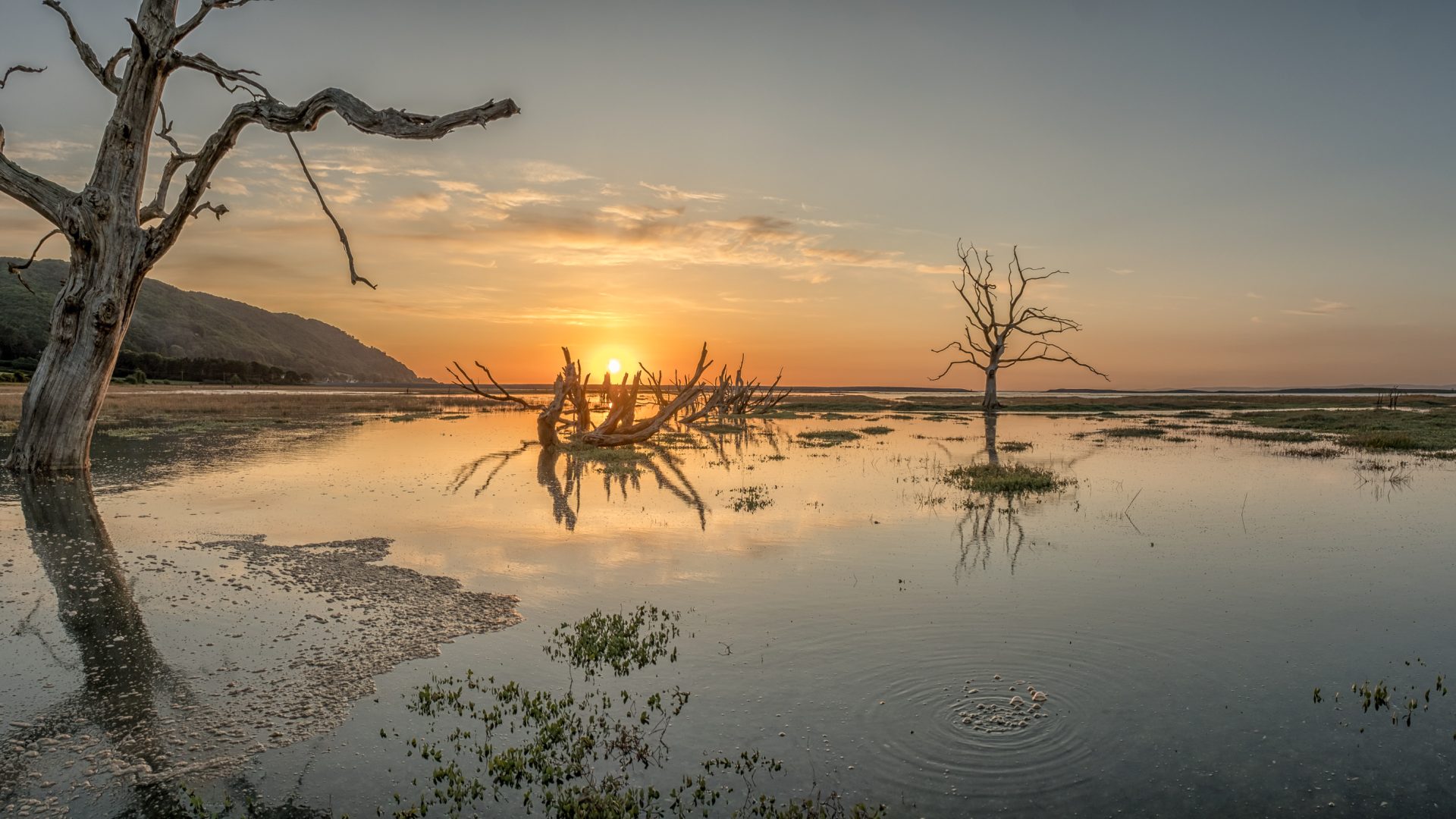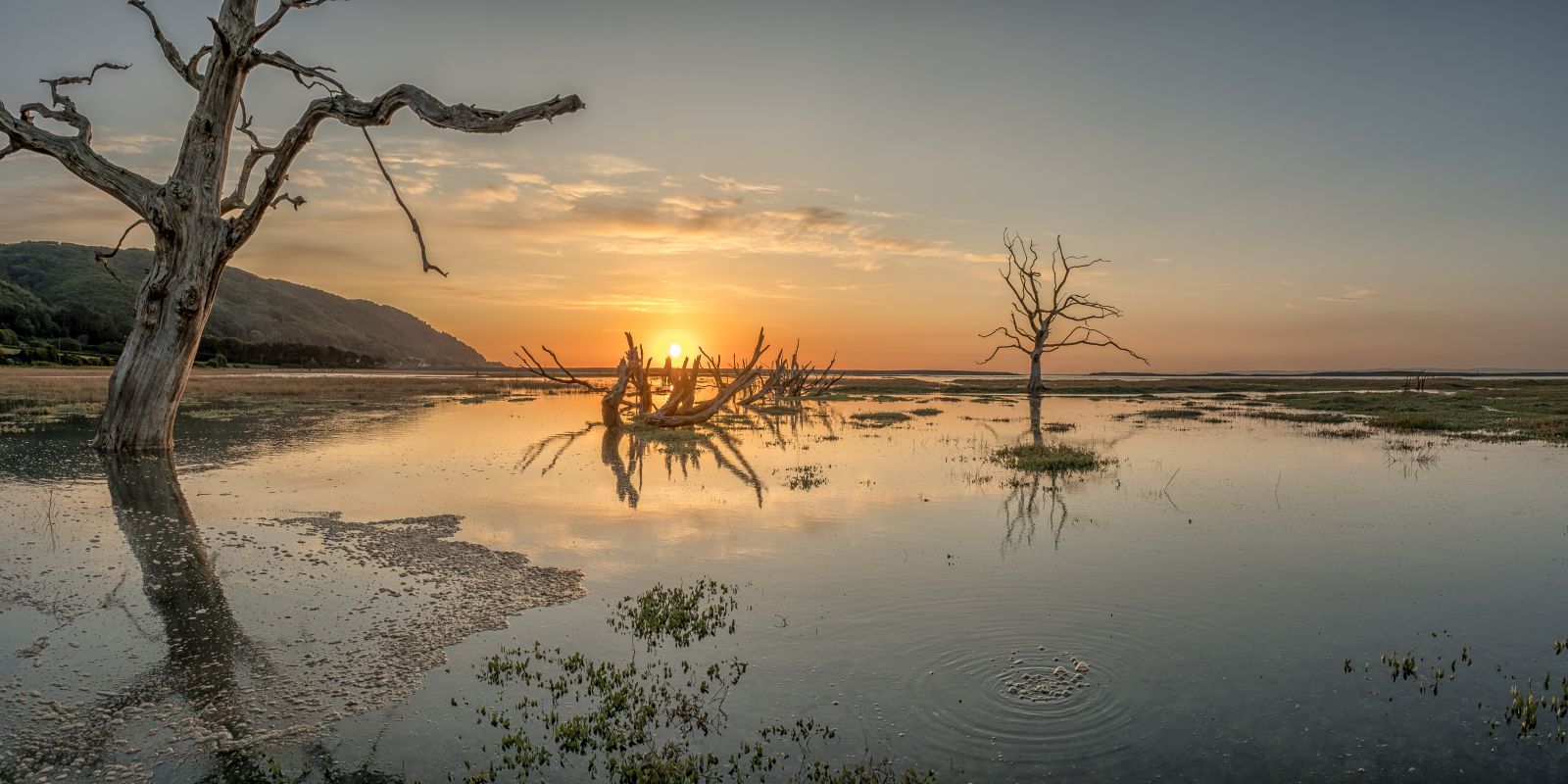
Q&A with Campaign for National Parks Photography Competition 2021 winner Shaun Davey
21 October 2021
Photographer Shaun Davey’s stunning image of sunset at Porlock Marsh in Exmoor National Park was chosen as the winner of the Campaign for National Parks Photography Competition 2021. We chatted to Shaun to find out more…

What prompted you to enter our photography competition?
I have entered on a couple of previous occasions, and have been shortlisted, so I am aware of the competition: but this year’s ‘climate change’ theme particularly appealed to me. I really enjoyed the way that this competition made me think of my photographs in this context, and I am pleased that I could find something positive to say.
How did you decide what images to submit?
I was keen to submit images telling a positive story of how we can better manage the challenges to come. So it was a case of looking through my portfolio for strong images with a climate change link, but also with something to say about how we can manage those changes.
Tell us more about your winning image – when/how you captured it etc…
Porlock Marsh is a salt marsh on the Exmoor coast. With its skeletal trees and hedges it seems an ancient landscape, but the marsh is only 25 years old; it was previously agricultural land. Porlock Marsh was formed when the National Trust and Exmoor National Park took the controversial decision to ‘let nature take its course’ when the shingle ridge protecting the area from the sea was breached in a storm in 1996. The marsh is now a haven for wildlife and an Site Special Scientific Interest (SSSI). We will have difficult decisions to take as the effects of climate change are felt, and Porlock Marsh is an example of how such changes can be managed successfully. The marsh is now an outstanding location for photographers, walkers and birdwatchers. The image shows a sunset across the flooded marsh at high tide – the breach is clearly visible beyond the more distant tree.
Because I live fairly close to the location, I can pick and choose the occasions that I go to photograph it. I am a bit nerdy, and compile an annual calendar of times when there will be a high spring tide close to sunset and sunrise – so I know when the conditions might be right. You need a 10 metre plus tide to get the water as high as it was that evening. The precise date and location of this image is 8 June 2020 at around 9pm, at SS87844739. The image is a multi-shot panorama, stitched in Adobe Lightroom. See Shaun’s meticulous planning here.
How do you feel being chosen as the overall winner?
Delighted and flattered. It’s really nice to have an image recognised nationally in this way.
Tell us about your relationship with Exmoor National Park?
I was brought up in the area and we moved back to Exmoor about eight years ago – so I have a very strong connection. I think Exmoor is an outstandingly beautiful location – the sheer range of landscape types is incredible in such a small area: open moorland with peat bogs, deep wooded valleys, agricultural land, coastline and, of course, salt marsh.
How did you get into photography and how have you developed your skills?
I used a 35mm film camera and dabbled with a wet darkroom when I was younger, but I came back to (digital) photography when I semi-retired a few years ago. I try to capture what I see, and produce images that best reflect my memory of the scene. I am constantly learning, and try to look for better ways to produce impactful images.
Why do you think climate change is important when it comes to National Parks?
All wild areas will feel the impact of climate change in ways which may be devastating and might change them fundamentally. However, it’s important to also see the positive contribution that National Parks can make to managing climate change – such as how we respond to rising sea levels; how we manage extreme weather events and rainfall; how we can restore/preserve peat bogs as carbon-sinks; and how we can provide low-impact grazing for meat production. In addition the parks have a strong educational role, in alerting visitors to the effects of climate change and, through that, modifying the behaviour of those visitors. Those who appreciate the natural world are more likely to try to avoid damaging it further.
National Parks will inevitably be negatively affected by climate change – but they can also help us find some of the mitigations, provide insights into how we manage the challenges, and educate the wider population.
How important do you think photos are in raising awareness/prompting change?
They say a picture paints a thousand word – well very few read a thousand words any more – so images are essential in getting messages across to today’s audience. For me, there is nothing more compelling than a strong image: whether that be a beautiful wildlife photograph or a pitiful turtle caught in discarded plastic fishing gear. It will be images – both moving and still – which prompt change in the majority.

Find out more about the results of Campaign for National Parks Photography Competition 2021 here.
